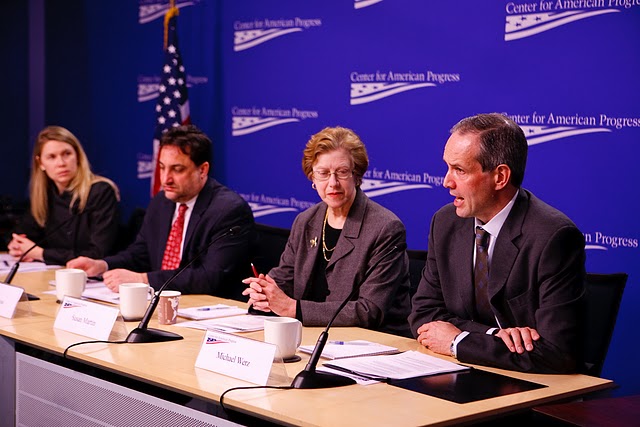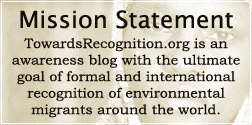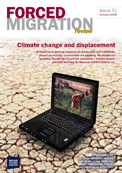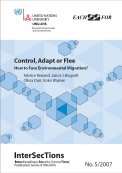The following post is a summary of the March 1, 2010 event, “The Global Implications of Climate Migration” from the New Security Beat blog, a product of the Environmental Change and Security Program at the Woodrow Wilson International Center for Scholars. It is written by Julien Katchinoff.

“As we …talk about the interconnections between climate change and migration we need to look at the interconnections in a way that understands what’s positive about the processes of migration and what’s problematic,” said Susan Martin, Herzberg Professor of International Migration at Georgetown University, during a recent event on climate and migration at the Center for American Progress.
Susan Martin joined Cynthia Brady, senior conflict advisor for the Office of Conflict Management and Mitigation at USAID and David Waskow, director of the Climate Change Program at Oxfam America, to identify the catalysts for future population flows, offer pragmatic policy solutions, and discuss work to be done on the ground.
While reminding the audience that climate-induced migration will tend to follow already existing patterns, Susan Martin broadly outlined four major intersections between migration and climate change impacts:
“Slow” Migration Pressures:
1. Drought or desertification resulting in a loss or depreciation of livelihoods.
Result: Push working family members to migrate to domestic or international urban centers.
2.Rising sea levels damaging fishing and agriculture opportunities.
Result: Migration to inland regions to reduce future risk.
“Rapid” Migration Pressures:
3. Intensification of natural disasters and damage to infrastructure.
Result: The coping costs increase to the point where they push large numbers of
people to leave their homes. Most individuals migrate internally. Of the four intersections, this is currently the most common.
4.Threats to the availability of food, water, and other natural resources.
Result: Low or high intensity conflict, leading to migrations. The short timeframes and potential large numbers of migrants involved make this driver the most problematic. Differing degrees of internal political stability are factors that can interfere for better or worse.
Yet these relationships are not without controversy. “Environmentalists have tended to see the issue of migration as a way of getting attention to mitigation and have often talked about migration in very alarmist terms,” Martin said. “Migration experts, on the other hand, have been very skeptical about the interconnection.” Instead, they have argued that other push and pull factors outside of climate are much more significant to the migration calculation.
Operating from the perspective that migration itself is an adaptation failure, David Waskow outlined several strategies which Oxfam deploys to help communities cope with uncertain futures:
1. Building climate resilience and developing adaptation strategies: Proactive approaches are essential, as agencies and
communities can address future threats with disaster planning and creating early warning systems.
2. Managing risk: The establishment of micro-insurance projects can cushion vulnerable populations against unexpected economic shocks.
3. Resettling communities: Moving rural populations to urban areas. Large rural influxes create tensions over land use and can strain urban governance and carrying capacities. This approach is left as a last recourse.
Cynthia Brady, though in agreement with Waskow concerning climate change’s threat to livelihoods and its role as a catalyst for conflict, suggested that there may be positive opportunities for managing climate risks. “The environment can and does provide an essential and effective platform for dialogue, communication, and confidence-building around shared interests,” Brady said. “It may be that certain conflicts actually lend themselves to the use of climate-related collaboration as a mechanism to resolve conflict or reduce tension between parties,” she said.
Climate-related projects at the community-level, from adaptive early warning systems to mitigating carbon storage schemes, hold the possibility to bring groups together in cooperative projects, build confidence, and defuse existing tensions. Transparent and participatory management of new investments may also increase trust in local and national governments with whom trust was previously lacking. While forestalling crises in the future, adaptation projects also hold the potential to unlock opportunities for peacebuilding and conflict resolution today.



